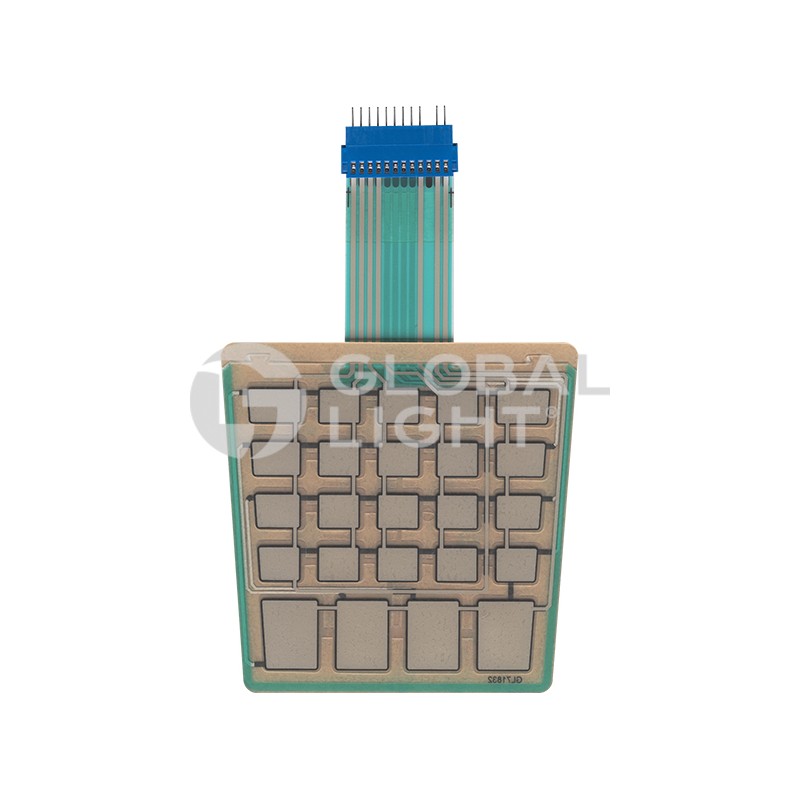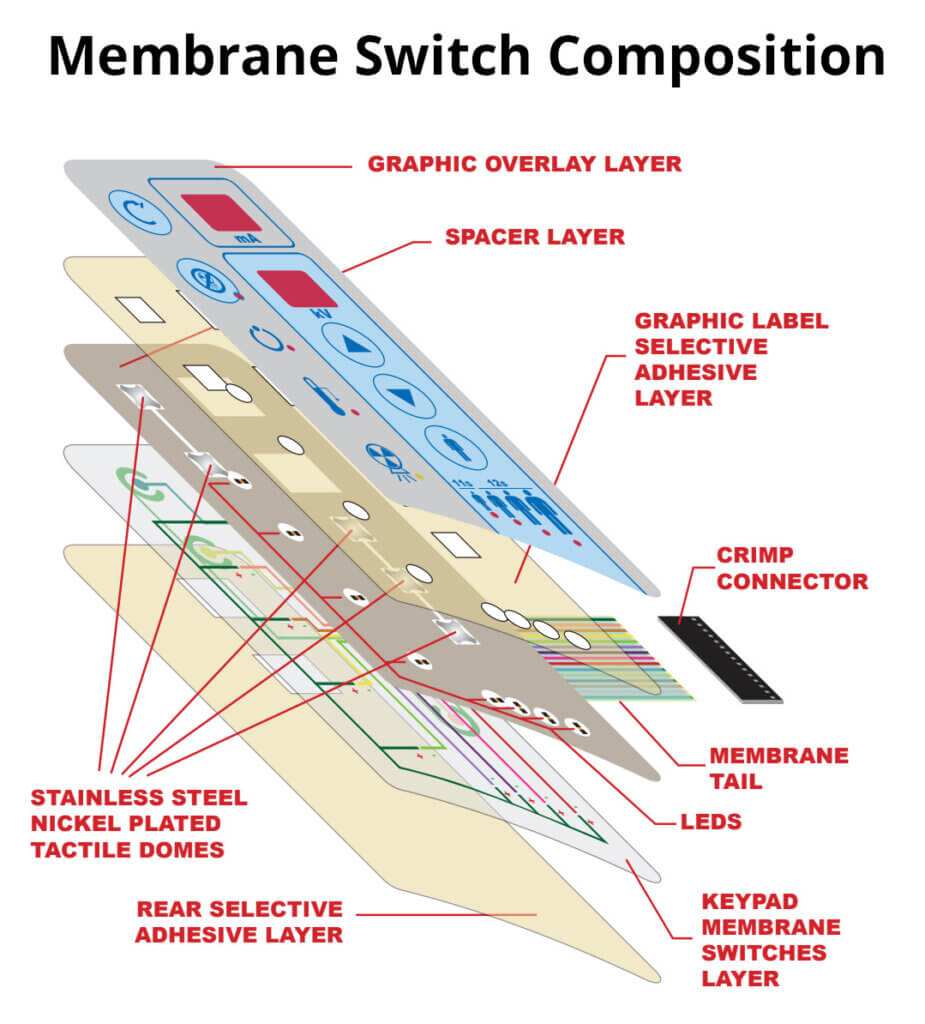Explore the Benefits of Using a Membrane Switch in Modern Devices
Explore the Benefits of Using a Membrane Switch in Modern Devices
Blog Article
The Benefits of Using Membrane Changes in Customer Electronics
Membrane layer buttons are increasingly acknowledged for their considerable advantages in customer electronic devices, particularly in enhancing user communication and streamlining production processes. The adaptability in design enables for customized options that satisfy varied consumer needs.
Improved User Experience

In today's competitive landscape of customer electronics, improved individual experience is critical; virtually 85% of individuals focus on intuitive user interfaces. Membrane switches over play a critical function in achieving this degree of functionality.
The responsive comments offered by membrane buttons is essential for directing customer actions, ensuring that commands are signed up accurately. This feedback device heightens and lessens errors individual complete satisfaction, promoting a favorable relationship in between the tool and the user. Moreover, the adjustable nature of membrane layer switches enables manufacturers to tailor user interfaces to specific individual needs, making gadgets extra accessible and welcoming.
Additionally, membrane layer buttons can include backlighting and graphic overlays, better enhancing visibility and usability in diverse atmospheres. This versatility ensures that tools continue to be useful and user-friendly, regardless of the setting. In general, the integration of membrane switches over into consumer electronics considerably enhances individual experience, driving brand name commitment and complete satisfaction in a progressively competitive market.
Cost-Effective Manufacturing
Consumer electronic devices suppliers are frequently seeking ways to stabilize top quality with cost, and membrane layer switches provide an engaging remedy for cost-effective manufacturing. These elements are naturally less complex than conventional mechanical buttons, which decreases both manufacturing costs and complexity. The light-weight layout of membrane switches over permits reduced delivery costs and easier assimilation right into small gadgets, further boosting their charm in a competitive market.
Manufacturers can create membrane buttons in high quantities, making use of economic climates of scale. This automation capability makes certain constant top quality while dramatically decreasing per-unit expenses. Furthermore, the materials made use of in membrane switches, such as polyester and polycarbonate, are commonly less expensive than those needed for conventional button innovations, adding to total expense financial savings.
The production process for membrane layer switches normally needs less steps and less labor contrasted to various other switch types. This structured strategy not only reduces labor prices yet likewise speeds up time-to-market, allowing firms to react promptly to consumer demand. As a result, the mix of lowered product costs and effective production processes settings membrane layer switches over as a smart investment for producers intending to deliver top quality customer electronics at affordable rate points.

Style Flexibility and Customization
While standard mechanical switches usually enforce limitations on design as a result of their bulk and called for placing devices, membrane layer switches offer unequaled adaptability and customization options for customer electronics. This ingenious innovation enables developers to produce smooth, inconspicuous user interfaces that can flawlessly integrate right into numerous product aesthetic appeals, from mobile phones to kitchen home appliances.
Membrane buttons can be created in virtually any shape or size, allowing suppliers to customize the design to specific ergonomic and functional demands. This versatility not just boosts individual experience yet additionally allows for artistic layouts that line up with brand identification. Additionally, making use of printed graphics on membrane layer changes offers the opportunity for complex layouts and vivid colors, which can be quickly modified without substantial expense effects.
In addition, membrane buttons can incorporate multiple performances right into a solitary layer, lowering the need for several components and simplifying assembly procedures. This streamlined design approach decreases room and weight, making it optimal for portable customer electronics. Generally, the layout adaptability and personalization abilities of membrane layer switches over encourage producers to introduce, inevitably resulting in even more interesting and straightforward items.
Sturdiness and Reliability
As technology remains to advance, the durability and dependability of membrane layer buttons have become vital factors to consider for suppliers in the customer electronics industry (membrane switch). Membrane layer switches are developed to hold up against severe environmental problems, including see post temperature variations, moisture, and dirt direct exposure. Their durable construction usually involves multi-layered products that provide an efficient obstacle versus contaminants, ensuring durability and regular efficiency

Additionally, membrane layer switches can withstand a significant number of actuations without loss of capability, commonly going beyond millions of cycles. This durability equates to reduce substitute prices and lowered downtime for makers and consumers alike. In general, the combination of environmental strength and mechanical integrity makes membrane layer switches a critical selection for customer electronic devices, making certain that tools continue to be functional and reliable throughout their designated life-span.
Streamlined Item Advancement
The resilience and integrity of membrane changes dramatically add to structured item advancement in the consumer electronics market. By incorporating these buttons early in the layout procedure, manufacturers can reduce the intricacy and number of elements required in their products (membrane switch). Clicking Here Membrane buttons are light-weight and compact, enabling more reliable room use within tools, which can cause streamlined assembly procedures
Additionally, the modification capacities of membrane switches make it possible for developers to customize functions particularly to customer requirements without incurring extreme costs or hold-ups. This flexibility promotes advancement, as companies can swiftly repeat designs based upon market comments, ultimately speeding up the time-to-market for new items.
The ease of manufacturing membrane layer switches additionally plays a vital role in item development. With modern-day printing methods and products, production can be scaled successfully, reducing and reducing lead times waste. This causes lower manufacturing costs, boosting overall earnings.
Verdict
In final thought, membrane layer switches substantially boost consumer electronics by giving an improved customer experience, cost-effective manufacturing procedures, and functional style choices. Their sturdiness and dependability ensure constant efficiency in various atmospheres, while structured item development helps with quicker time-to-market. These benefits jointly add to the technology and functionality of consumer gadgets, addressing the developing needs of individuals properly. The assimilation of membrane layer switches represents a calculated option for makers looking for to maximize item design and performance.
Membrane switches are progressively acknowledged for their considerable advantages in customer electronics, particularly in enhancing user communication and simplifying production processes. Additionally, the products utilized in membrane buttons, such as polyester and polycarbonate, are frequently less pricey than those needed for conventional button innovations, contributing to overall price savings.
The manufacturing procedure for membrane switches generally requires fewer actions and less labor contrasted to various other switch kinds. get redirected here Unlike standard mechanical switches, which might wear out over time, membrane switches over use a sealed style that minimizes the threat of mechanical failure.In conclusion, membrane layer changes considerably boost customer electronic devices by providing a boosted user experience, cost-efficient manufacturing processes, and functional design alternatives.
Report this page